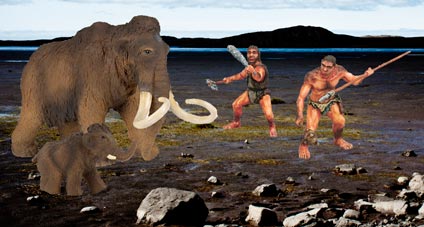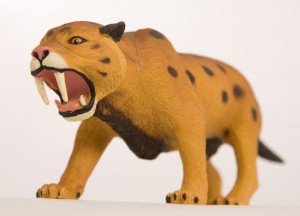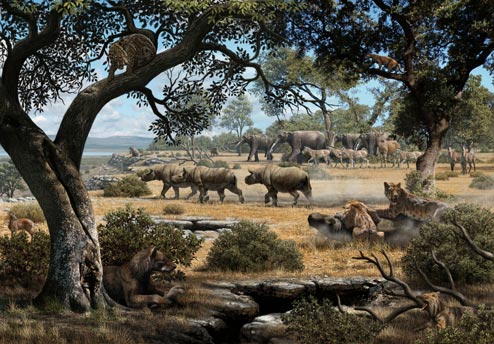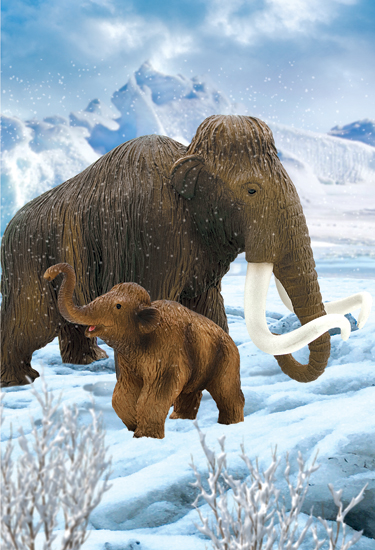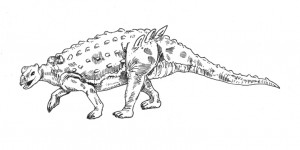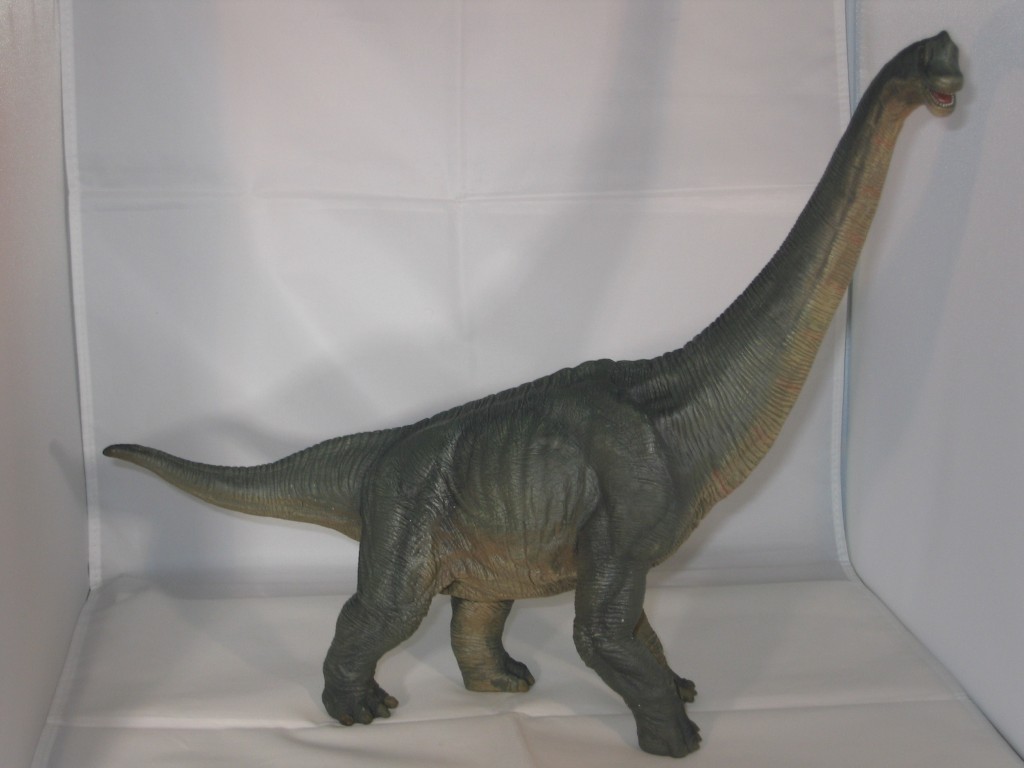Sauroniops pachytholus – Palaeontologists turn to Tolkien to Name a New Dinosaur
A new species of theropod dinosaur has been named by a team of scientists after the evil Eye of Sauron from the Lord of the Rings books written by J.R. R. Tolkien. The inspiration for naming a new genus of organism can come from many things, but since this new predatory dinosaur is only known from a fragment of skull bone that was positioned directly above the eye socket (orbit) the name Sauroniops pachytholus seems entirely appropriate.
The name means “thick domed eye of Sauron”, in reference to the bump and thickened portion of the skull fragment studied.
New Species of Theropod
The Fossilised Element from the Skull

Views of the portion of the skull accompanied by scientific illustrations.
Picture credit: Andrea Cau
The Kem Kem Formation
The Kem Kem Formation of Morocco and Algeria represents a series of strata laid down in the Cretaceous (Albian to Cenomanian faunal stages), approximately 95 to 100 million years ago. The majority of the deposits represent an inter-tidal, estuarine environment, with wide lagoons, and broad, flat flood plains crossed by many rivers further inland. The environment supported and extensive and diverse flora and fauna. This area probably supported the largest number of giant predators in any known Mesozoic habitat.
A number of meat-eating dinosaurs have been associated with the Kem Kem Formation, most named from fragmentary fossil material just like Sauroniops. The list of predators reads like a “who’s who” of theropod dinosaurs – Carcharodontosaurus, Deltadromeus, Spinosaurus, Rugops and now the 13-metre-long Sauroniops joins their ranks.
Sauroniops Illustrated (Feeding on a Young Spinosaurus)
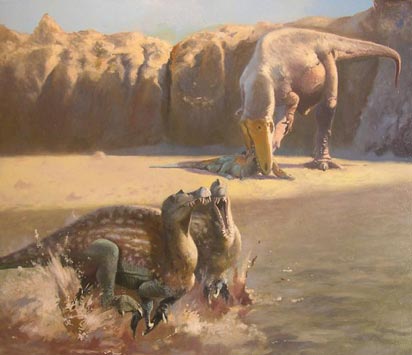
Sauroniops feeds on a Spinosaurus (background), whilst a pair of Spinosaurs flee the scene.
Picture credit: Emiliano Troco
New Dinosaurs Awaiting Discovery
Palaeontologists had long suspected that there were other theropod dinosaurs awaiting discovery from the rocks of this region. The strata from south-west Morocco for example, had yielded a large number of fossilised theropod teeth. These had yet to be assigned to any particular genus. One of the problems with the strata in this part of the world is that the fossils found within them are extremely fragmentary in nature.
The action of river water and the tides has jumbled up and dis-articulated any fossil bones and teeth that have survived. The fossiliferous deposits have been described by palaeontologists as if all the fossils had been put into a blender, the blender turned on and the resulting mix re-deposited.
Fragments of Fossil Material Typical of the Kem Kem Formation
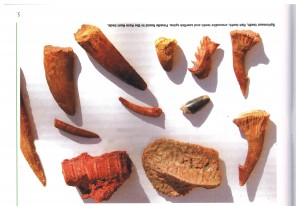
Typical fossils from the Kem Kem Formation.
Picture credit: Everything Dinosaur
The Skull Fragment Superimposed on a Carcharodontid Skull with Human Skull for Comparison

Sauroniops compared to a human skull.
Picture credit: Andrea Cau
The Age of the Formation
The age of the fossil bearing rocks of south-eastern Morocco is disputed. In the case of this new dinosaur genus, the exact age of the fossils appertaining to Sauroniops is further complicated as it is difficult to pinpoint exactly where this fossil material was found.
A private collector purchased the fossil bone from a local fossil trader in Morocco. The trader stated that the fossil was purchased himself from local fossil hunters near to the small village of Taouz. This village is located in a mountainous region close to the border with Algeria. The private collector later donated this specimen to a Museum located at Montevarchi in central Italy (Tuscany).
With just an isolated fragment of skull material measuring 18.5 centimetres in length to work with, a team of Italian scientists compared the shape and structure of this part of the skull (left frontal bone) with those of other meat-eating dinosaurs known from the Kem Kem Formation. They concluded that this fragment (assigned the identification code of MPM 2594) was indeed attributable to a new type of carnivorous dinosaur.
An Academic Paper
An academic paper has just been published in the scientific journal Acta Palaeontologica Polonica. It has been published some five years after the fossil was acquired by the private collector.
For models of African theropod dinosaurs and other prehistoric creatures: Scale Models of Theropod Dinosaurs (CollectA Deluxe).
Based on comparisons with the skulls of other theropods, the palaeontologists have estimated that Sauroniops may have been up to thirteen metres in length. Sauroniops – “the eye of Sauron” would have been an apex predators. One of the lead authors of the scientific paper, Andrea Cau commented that with the frontal bone to study, the only part of this dinosaur known, it seemed appropriate to name the fearsome creature after the evil eye of Sauron from the J. R. R. Tolkien novels.
Given the paucity of the fossil material, it is extremely difficult to assign any further characteristics to this new dinosaur species. However, S. pachytholus has been tentatively assigned to the Carcharodontosauridae and placed close to Eocarcharia, which itself has been described from a maxilla and a parietal bone (skull bones found in the Sahara).
Phylogenetic Assessment of S. pachytholus

Assigning a place for S. pachytholus in the theropod family tree.
Diagram credit: Andrea Cau
The orange arrow in the cladogram indicates the potential position of S. pachytholus amongst the carcharodontosaurids.
A New Theropod Species – S. pachytholus
The bump and raised portion of the skull has been seen in other carcharodontosaurids as well as abelisaurids. The scientists have speculated that these animals had crests over their eyes which indicated that they were mature, breeding adults. These bumps and crests may have been brightly coloured and acted as signalling devices in non-verbal communication between members of the same species. It has even been suggested that these thickened portions of the skull evolved as a result of intra-specific competition.
Animals of the same species competing with each other to win mates, social status, fight over the carcases of other dinosaurs and so on. Perhaps the Carcharodontosaurids and their relatives were “head bumpers”.
Particularly Favourable for Herbivorous Dinosaurs
The palaeontologists have concluded that the environment in this part of northern Africa during the Cretaceous must have been particularly favourable to herbivorous dinosaurs. It would have needed to be to support the number of large, predatory dinosaurs now known from this part of the world.
The Kem Kem Formation may yet yield more theropod dinosaurs as these sediments are explored, the number of different carnivores found to date suggests that there must have been an abundance of food.
The scientific paper: “Evidence of a new carcharodontosaurid from the Upper Cretaceous of Morocco” by Andrea Cau, Fabio Marco Dalla Vecchia, and Matteo Fabbri published in Acta Palaeontologica Polonica.


